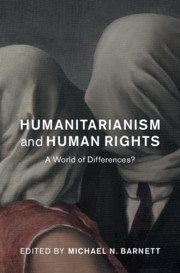53 results
Copyright page
-
- Book:
- Global Governance in a World of Change
- Published online:
- 02 December 2021
- Print publication:
- 09 December 2021, pp iv-iv
-
- Chapter
-
- You have access
- Open access
- HTML
- Export citation
Additional material
-
- Book:
- Global Governance in a World of Change
- Published online:
- 02 December 2021
- Print publication:
- 09 December 2021, pp ii-ii
-
- Chapter
-
- You have access
- Open access
- HTML
- Export citation
Tables
-
- Book:
- Global Governance in a World of Change
- Published online:
- 02 December 2021
- Print publication:
- 09 December 2021, pp viii-viii
-
- Chapter
-
- You have access
- Open access
- HTML
- Export citation
Acknowledgments
-
- Book:
- Global Governance in a World of Change
- Published online:
- 02 December 2021
- Print publication:
- 09 December 2021, pp xi-xii
-
- Chapter
-
- You have access
- Open access
- HTML
- Export citation
Contributors
-
- Book:
- Global Governance in a World of Change
- Published online:
- 02 December 2021
- Print publication:
- 09 December 2021, pp ix-x
-
- Chapter
-
- You have access
- Open access
- HTML
- Export citation
Contents
-
- Book:
- Global Governance in a World of Change
- Published online:
- 02 December 2021
- Print publication:
- 09 December 2021, pp v-vi
-
- Chapter
-
- You have access
- Open access
- HTML
- Export citation
Index
-
- Book:
- Global Governance in a World of Change
- Published online:
- 02 December 2021
- Print publication:
- 09 December 2021, pp 367-382
-
- Chapter
-
- You have access
- Open access
- HTML
- Export citation
5 - The Humanitarian Club
-
-
- Book:
- Global Governance in a World of Change
- Published online:
- 02 December 2021
- Print publication:
- 09 December 2021, pp 155-181
-
- Chapter
-
- You have access
- Open access
- HTML
- Export citation
Introduction
-
-
- Book:
- Global Governance in a World of Change
- Published online:
- 02 December 2021
- Print publication:
- 09 December 2021, pp 1-47
-
- Chapter
-
- You have access
- Open access
- HTML
- Export citation
Figures
-
- Book:
- Global Governance in a World of Change
- Published online:
- 02 December 2021
- Print publication:
- 09 December 2021, pp vii-vii
-
- Chapter
-
- You have access
- Open access
- HTML
- Export citation

Global Governance in a World of Change
-
- Published online:
- 02 December 2021
- Print publication:
- 09 December 2021
-
- Book
-
- You have access
- Open access
- Export citation
Part II - Practices
-
- Book:
- Humanitarianism and Human Rights
- Published online:
- 19 October 2020
- Print publication:
- 15 October 2020, pp 105-251
-
- Chapter
- Export citation
Part I - Differences or Distinctions?
-
- Book:
- Humanitarianism and Human Rights
- Published online:
- 19 October 2020
- Print publication:
- 15 October 2020, pp 31-104
-
- Chapter
- Export citation
Conclusion
- from Part II - Practices
-
-
- Book:
- Humanitarianism and Human Rights
- Published online:
- 19 October 2020
- Print publication:
- 15 October 2020, pp 235-251
-
- Chapter
- Export citation
Introduction
-
-
- Book:
- Humanitarianism and Human Rights
- Published online:
- 19 October 2020
- Print publication:
- 15 October 2020, pp 1-30
-
- Chapter
- Export citation
Index
-
- Book:
- Humanitarianism and Human Rights
- Published online:
- 19 October 2020
- Print publication:
- 15 October 2020, pp 330-344
-
- Chapter
- Export citation
Bibliography
-
- Book:
- Humanitarianism and Human Rights
- Published online:
- 19 October 2020
- Print publication:
- 15 October 2020, pp 286-329
-
- Chapter
- Export citation

Humanitarianism and Human Rights
- A World of Differences?
-
- Published online:
- 19 October 2020
- Print publication:
- 15 October 2020
Contents
-
- Book:
- Humanitarianism and Human Rights
- Published online:
- 19 October 2020
- Print publication:
- 15 October 2020, pp v-vi
-
- Chapter
- Export citation
Acknowledgments
-
- Book:
- Humanitarianism and Human Rights
- Published online:
- 19 October 2020
- Print publication:
- 15 October 2020, pp viii-viii
-
- Chapter
- Export citation



